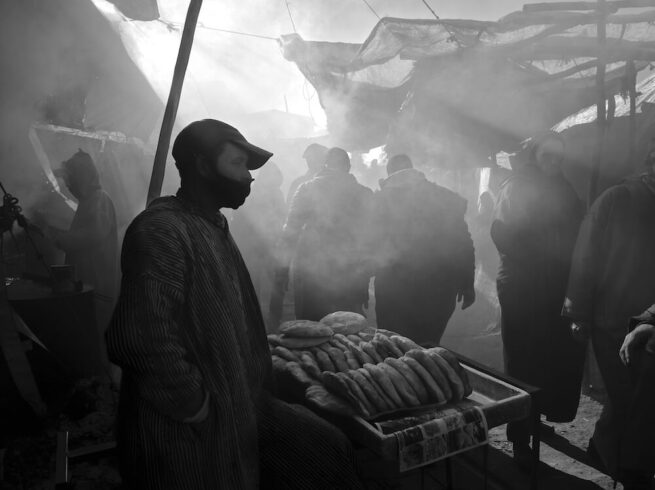The arrival of digital photography has undoubtedly given both amateur and documentary photographers the ability to tell stories with even greater authorship and control. In this tutorial section we are interested in the wider use of visual storytelling, including landscapes and found still life, as a tool for personal expression. All these can be found in locations we offer for documentary storytelling workshops. Click to find out more about what Morocco can offer.
Using visual storytelling through a narrative sequence of images, it’s possible to convey an understanding of a place, situation or the photographer’s experience or point of view. With no limits to experimentation, both in shots taken and processing outcomes, the only restriction is creative thinking. Here you will learn how to layer your photography with more meaning and convey messages to evoke emotional responses in the viewer.
Documentary photographers traditionally use the techniques of visual storytelling to compel the viewer to understand the fullness of what they are seeing, including the use of location establishing or ‘filler’ shots. Most amateur photographers who attempt a form of storytelling frequently fail to take these filler shots that can be useful to help create context and reinforce the narrative. These can be overlooked at they don’t always appeal to the photographer’s photographic sensibilities.
Documentary film making, a close cousin of documentary photography, often negates the beautiful frame in favour of narrative flow, so a range of individual frames are included that may not be aesthetically appealing in themselves. Instead the narrative goals are seen as paramount. Amateur photographers for the most part begin and develop their photography based on the aesthetic appreciation of the single image, less so the story, and so are reluctant to adopt the filler shot strategy.
Some of photography’s powers reside in expressing feelings through facial expressions and body language and most viewers have an ability to instantly understand this ‘universal language’. Photography is also unique in its suggestive influence. Small details can say something about larger phenomena – a little piece of a plant can actually refer to a whole field of flowers.
Other techniques that documentary photographers use for storytelling are wide angle lenses to create an illusion of a wider space and to emphasise distances between the elements in a photograph. Conversely, telephoto lenses can be used to compress space, especially useful if you want to emphasis a crowded beach for example.
Using visual storytelling through a narrative sequence of images, it’s possible to convey an understanding of a place, situation or the photographer’s experience or point of view. With no limits to experimentation, both in shots taken and processing outcomes, the only restriction is creative thinking. Here you will learn how to layer your photography with more meaning and convey messages to evoke emotional responses in the viewer.
Documentary photographers traditionally use the techniques of visual storytelling to compel the viewer to understand the fullness of what they are seeing, including the use of location establishing or ‘filler’ shots. Most amateur photographers who attempt a form of storytelling frequently fail to take these filler shots that can be useful to help create context and reinforce the narrative. These can be overlooked at they don’t always appeal to the photographer’s photographic sensibilities.
Documentary film making, a close cousin of documentary photography, often negates the beautiful frame in favour of narrative flow, so a range of individual frames are included that may not be aesthetically appealing in themselves. Instead the narrative goals are seen as paramount. Amateur photographers for the most part begin and develop their photography based on the aesthetic appreciation of the single image, less so the story, and so are reluctant to adopt the filler shot strategy.
Some of photography’s powers reside in expressing feelings through facial expressions and body language and most viewers have an ability to instantly understand this ‘universal language’. Photography is also unique in its suggestive influence. Small details can say something about larger phenomena – a little piece of a plant can actually refer to a whole field of flowers.
Other techniques that documentary photographers use for storytelling are wide angle lenses to create an illusion of a wider space and to emphasise distances between the elements in a photograph. Conversely, telephoto lenses can be used to compress space, especially useful if you want to emphasis a crowded beach for example.



